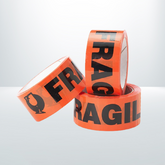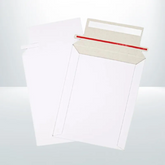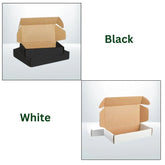Compostable packaging is quickly gaining traction as an eco-friendly alternative to traditional packaging materials. With increasing awareness of environmental issues and the need for sustainable solutions, many businesses and consumers are turning to compostable packaging materials to reduce their ecological footprint. These materials break down naturally into organic matter, leaving no toxic residues behind, making them a popular choice for those striving for sustainability.
However, despite its growing popularity, there are still numerous misconceptions surrounding compostable packaging. Many people believe it's costly, ineffective, or too difficult to implement. In reality, compostable packaging solutions offer numerous benefits when properly understood and utilized.
This guide will break down the most common myths and misconceptions about compostable packaging, providing clarity on how these materials truly work and why they are an essential part of the future of sustainable packaging. By the end, you’ll have a clearer picture of the advantages compostable packaging offers and why it’s worth considering for both businesses and consumers.
Myth 1: Compostable Packaging Is the Same as Biodegradable Packaging
Perplexingly, a number of people juxtapose compostable and biodegradable packaging as if they were one and the same.
Although both kinds of packaging materials are biodegradable and thus different from most conventional materials, they entertain major distinctions in terms of the breakdown procedures and disposal methods.
Here's a detailed look to clarify:
Biodegradability: Bio-degradable inputs disintegrate over a period of time aided by microorganisms in environment. This process does not require any functional specification, duration or any special conditions to be fulfilled.
Compostability: Compostable materials need to have certain parameters of temperature, moisture as well as presence of microorganisms which are generally found in industrial composting system.
Certification Standards: Compostable products have to conform to certain specifications in the use of the materials which include ASTM D6400 in USA where the products have to decompose under the conditions of a composting facility within a certain period (90 days). It is therefore important for the readers to note that biodegradable products do not necessarily conform to these standards.
End Products: Since composting yields an organic material that is an excellent nutrient media, farmers opt for it as a soil amendment. Biodegradation might just degrade the material and instead of giving out useful by-products, it might be left with for instance metal residues or toxins.
The awareness of these differences enable you to make better decisions regarding the things you apply and throw away, thus becoming eco-friendly.
Myth 2: Compostable Packaging Materials Don't Work as Well as Traditional Packaging
Many people believe that compostable packaging materials can't match the performance of traditional options, yet this isn't the case. Advanced engineering and material science have led to the development of compostable materials that perform on par with, or even surpass, their traditional counterparts in specific applications. These include polymers derived from renewable resources like polylactic acid (PLA) and polyhydroxyalkanoates (PHA), which offer comparable durability and protection.
You might wonder about the practicality of such materials in everyday use. Compostable packaging has been successfully implemented in various industries, including food service, where it withstands heat, oil, and moisture just as well as conventional plastics. If you're looking for Packaging Supplies in Melbourne to make the switch, compostable options are readily available and suitable for a variety of products.
Tests and studies show that these materials can also maintain their integrity under the stresses of shipping and handling, debunking the myth of inferior functionality.
Moreover, the shelf life of products encased in compostable packaging isn't compromised. The materials are designed to break down only under the specific conditions found in composting environments, not while they're still in use.
This ensures that the functionality needed to protect and preserve goods during their intended shelf life is fully maintained, challenging the myth that compostable options are less effective.
Myth 3 – Compostable Packaging is just too expensive for most businesses to adopt.
An environmental friendly packaging, which is most often viewed as expensive, is slowly gaining its place within the affordable price range for companies across different industries. Coming back to the topic of sustainable packaging materials, one should not fail to analyse the economic incentives that emerged in favour of compostability.
At the beginning, the availability of the materials used in composting were expensive since there were few manufacturers and few people using compostable materials. However, as markets grow and production processes advance, cost trends are aspiring to become more affordable as compared to conventional packaging.
Here are several key factors that influence the cost-effectiveness of compostable packaging:
Economies of Scale: As more businesses avail themselves to compostable products, manufacturers move up the experience curve and gain efficiency and hence lower cost per unit.
Innovative Material Technologies: Biopolymers and recycling technologies have improved which makes raw materials to be cheaper.
Regulatory Incentives: Through these concerns, it is increasingly clear that governments around the globe are offering tax exemptions for sustainable practices while providing the offsets.
Consumer Demand: Customer awareness plays an important role for the promotion of the compostable goods as the greater portion of the populace starts opting for less hazardous goods.
These advancements are changing the environment enabling compostable packaging to be economically sustainable.
What you will discover is that these green solutions are not only good for the environment but also for the companies pocket in the long run.
Myth 4: All Compostable Packaging Is Suitable for Home Composting
Contrary to the public’s perception, not all compostable packaging must go through home composting.
It is therefore important to appreciate the fact that even as compostable materials are in a unique way manufactured to decay under certain conditions, the conditions within your backyard compost bin might not be conducive.
The majority of home compost systems have a problem of lack of heat levels necessary for composting many types of compostable packaging materials including PLA plastics which are biodegradable plastics based on renewable resources such as cornstarch.
Still, industrial composting facilities meet these parameters—temperature, moisture, etc.—to guarantee that these items break down appropriately.
The composting facilities utilize managed composting systems which make it possible to accommodate a wider range of compostable materials than home processes some of which, are very hard and take a longer time to decompose.
Myth 5: Compostable Packaging Can't Be Used for Certain Types of Products
To clear the air, it is right to remind people that, contrary to what they believe, compostable packaging can be used on almost any form and for any type of good. This versatility is important because it corresponds to the growing interest in finding out new products for industries in the place of plastics.
Here are several key points where compostable packaging is effectively utilized:
Food and Beverage: This post is devoted to compostable packaging – bags for vegetables or fruits, covers for coffee packs, which are intended to decompose with organics.
Electronics: Many small electronic parts are packed with compostable cushioning that work as well as polystyrene at protecting the items.
Healthcare: Reusable packaging is utilized for medical needs where sanitation is important and therefore the utilization of compostable wrappings provides a greener possibility for packaging such supplies.
Retail: Today many clothes and cosmetic products, accessories and shoes come in compostable packages or wrappers that establish brands’ sustainable images.
Despite the fact that compostable materials are believed to be more appropriate for specific usages only owing to their nature, the possible uses of such material numerous and diverse.
Innovations in material science have expanded the usability of these products, ensuring they meet the functional demands of various industries while providing an environmentally friendly disposal method.
This adaptability confirms that moving towards compostable solutions isn't only possible but practical across numerous sectors.
Frequently Asked Questions
How Long Does Compostable Packaging Typically Take to Decompose?
You're wondering about decomposition times for compostable packaging. Typically, it breaks down within 90 to 180 days in proper industrial composting conditions, depending on material composition and environmental factors like temperature and humidity.
Does Compostable Packaging Emit Methane During Decomposition?
You might worry that compostable packaging emits methane during decomposition, but it primarily releases CO2 in a controlled compost environment. Methane production is minimal, ensuring it's a greener option than regular plastics.
Can Compostable Packaging Be Recycled With Other Plastics?
You shouldn't recycle compostable packaging with other plastics because it requires specific composting conditions to break down and can contaminate the recycling process of traditional plastics, undermining the effectiveness of recycling programs.
Conclusion
Now that you've seen through the myths, you understand that compostable packaging isn't a one-size-fits-all solution, but it's a viable option when used correctly. It's crucial to recognize that these materials require specific composting facilities and aren't interchangeable with biodegradable ones. By choosing wisely and understanding the requirements and limitations, you can make a significant impact on sustainability efforts. Remember, supporting advancements in compostable packaging technology is key to improving its accessibility and effectiveness.
















